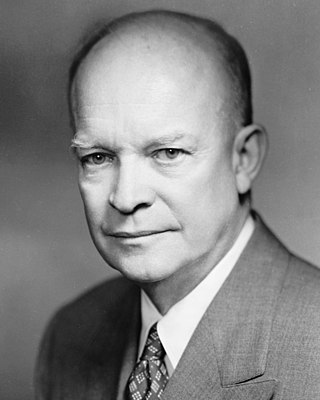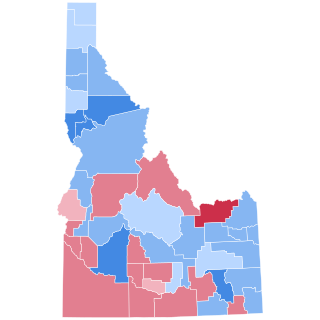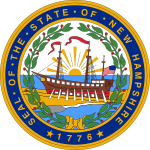
The Republican Party, known retroactively as the Democratic-Republican Party, was an American political party founded by Thomas Jefferson and James Madison in the early 1790s. It championed liberalism, republicanism, individual liberty, equal rights, separation of church and state, freedom of religion, decentralization, free markets, free trade, and agrarianism. In foreign policy it was hostile to Great Britain and the Netherlands and in sympathy with the French Revolution and Napoleonic wars. The party became increasingly dominant after the 1800 elections as the opposing Federalist Party collapsed.

Presidential elections were held in the United States from November 4 to December 7, 1796, when electors throughout the United States cast their ballots. It was the first contested American presidential election, the first presidential election in which political parties played a dominant role, and the only presidential election in which a president and vice president were elected from opposing tickets. Incumbent vice president John Adams of the Federalist Party defeated former secretary of state Thomas Jefferson of the Democratic-Republican Party.

Presidential elections were held in the United States from October 31 to December 3, 1800. In what is sometimes called the "Revolution of 1800", the Democratic-Republican Party candidate, Vice President Thomas Jefferson, defeated the Federalist Party candidate and incumbent, President John Adams. The election was a political realignment that ushered in a generation of Democratic-Republican leadership. This was the first presidential election in American history to be a rematch. It was also the first election in American history where an incumbent president did not win re-election.

Presidential elections were held in the United States from October 31 to December 2, 1828. Just as in the 1824 election, President John Quincy Adams of the National Republican Party faced Andrew Jackson of the Democratic Party, making the election the second rematch in presidential history. Both parties were new organizations, and this was the first presidential election their nominees contested.

The 51st United States Congress, referred to by some critics as the Billion Dollar Congress, was a meeting of the legislative branch of the United States federal government, consisting of the United States Senate and the United States House of Representatives. It met in Washington, D.C., from March 4, 1889, to March 4, 1891, during the first two years of Benjamin Harrison's presidency.

John Crepps Wickliffe Beckham was an American attorney and politician who served as the 35th governor of Kentucky and a United States senator from Kentucky. He was the state's first popularly-elected senator after the passage of the Seventeenth Amendment.

From March 11 to June 3, 1952, delegates were elected to the 1952 Republican National Convention.

The 1970 New York state election was held on November 3, 1970, to elect the governor, the lieutenant governor, the state comptroller, the attorney general and a U.S. Senator, as well as all members of the New York State Assembly and the New York State Senate.

The 1932 United States Senate election in Connecticut was held on November 8, 1932. Incumbent Senator Hiram Bingham III ran for a second full term in office but was defeated by Democratic U.S. Representative Augustine Lonergan. This was the first time since 1879 that Democrats won this Senate seat, and the first since 1881 that they won either seat.

The 1948 United States presidential election in Idaho took place on November 2, 1948, as part of the 1948 United States presidential election. State voters chose four representatives, or electors, to the Electoral College, who voted for president and vice president.
The Boston mayoral election of 1899 occurred on Tuesday, December 12, 1899. Republican candidate Thomas N. Hart defeated Democratic nominee Patrick Collins and two other contenders, to become mayor for a second tenure. Incumbent mayor Josiah Quincy had announced in July 1899 that he would not seek re-election.

The 1948 New Hampshire gubernatorial election was held on November 2, 1948. Republican nominee Sherman Adams defeated Democratic nominee Herbert W. Hill with 52.21% of the vote.

The 1946 New Hampshire gubernatorial election was held on November 5, 1946. Incumbent Republican Charles M. Dale defeated Democratic nominee F. Clyde Keefe with 63.14% of the vote.

A general election was held in the U.S. state of Wyoming on Tuesday, November 5, 1974. All of the state's executive officers—the Governor, Secretary of State, Auditor, Treasurer, and Superintendent of Public Instruction—were up for election. Democratic gubernatorial nominee Edgar Herschler won a sizable victory in the gubernatorial election, and while Democrats generally improved their margins in the other statewide races, they fell short in all four.
















